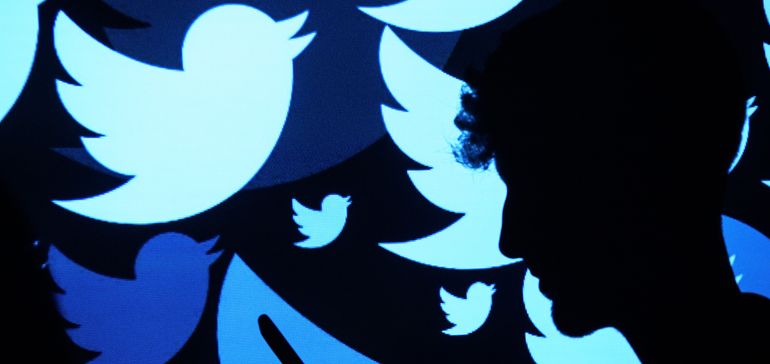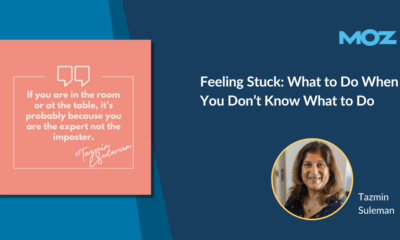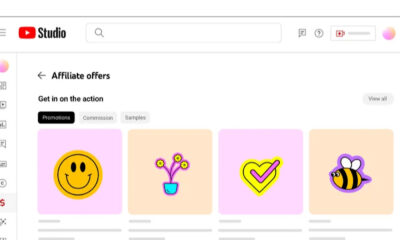SOCIAL
How Will Twitter Make Money Under Elon Musk? A Look at the Currently Proposed Options

So after week two of the Elon Musk Twitter drama, we’re left in a state of limbo, as we await the final approvals for the deal, which will eventually make Musk the head honcho at a private Twitter, which may or may not run ads anymore, may or may not allow all types of racist, homophobic and abusive speech, and may or may not be able to, one day, actually make money, despite these changes.
And we have little to go on right now as to how it will impact the company, and the platform as we know it. What we do know is that Twitter employees are increasingly nervous about their jobs, and the business that they may end up working for under Musk, while we’ve also had some slight hints as to how Musk plans to change the app.
To be clear, Twitter is not a charity, and after spending $44 billion on the app, Elon Musk will be looking for ways to maximize Twitter’s revenue intake, and recoup at least some of that cost. In a recent interview, Musk said that doesn’t care about the economics of the deal at all, and that his driving mission is to run “a public platform that is maximally trusted and broadly inclusive”.
But with huge debt, and accumulating interest, Musk has to make money too, and the bull case for the acquisition is that Musk, being the visionary that he is, sees something that others don’t, and can clear a pathway to optimal success for the platform – even though most market analysts see no viable pathway to turning any significant profit from the app.
So how will Musk do it?
Here are the areas that Musk is reportedly looking at right now – and to be clear, Musk has come up with these proposals without internal knowledge of the company and its current make up.
- Increasing subscriptions – Musk is reportedly looking to build Twitter Blue into a registration layer, of sorts, with users paying a monthly fee to get a verification tick that confirms that they’re an actual, real person. That could better enable Twitter to tackle bots (as it would make running bot farms cost prohibitive), while it would also ensure a level of transparency in the app, because you would know, based on these new forms of authentication tags, that you’re interacting with a real person, who’s registered their contact and payment details in the app. The economics could be difficult – if Musk were to charge $1 per month for this, that would bring in $229m per month/$2.7b per annum, if the current number of active users stick around, and aren’t all bots. You’d have to assume that quite a few won’t end up paying, which brings this down a lot, and would reduce Twitter’s revenue intake significantly, if this were the only way Twitter could make money in future. For reference, Twitter made $5.08b in revenue in 2021.
- Taking Twitter private – Of course, some of that revenue pressure is lessened if Twitter goes private, as it would no longer be beholden to shareholders who expect to see revenue rise by a defined, acceptable amount. Musk’s view is that Twitter needs to go private to ensure that it can make decisions free from the pressure of outside forces, enabling it to truly become a platform of free speech. The problem with that, of course, is that advertisers will be less comfortable placing ads alongside potentially offensive content – but that then leads into the next stage of Musk’s grand Twitter plan.
- No more ads – This would obviously be the biggest impact from a social media marketing perspective – Musk has said that Twitter should no longer run ads at all to remain truly independent. That then also means that Twitter would need to rely on alternate sources of income, and with ads making up 98% of the company’s revenue, that’s a big hole to fill. Part of Musk’s thinking here may also be that Twitter can cut costs by also removing all of the staff that work on its ad elements, which would be a major cost saving – but even so, if Musk wants to get close to making Twitter profitable, when factoring in its operating expenses versus income, it’ll be a big shortfall to make up. It’s difficult to see how this would be possible, but maybe, Musk knows something that we don’t.
- Charging for tweet embeds – This seems like a bit more of a stretch, but Musk has also reportedly floated the idea of charging websites for embeds of tweets from verified users, with the money potentially going back to the users themselves. That would align with Musk’s push to get more high profile users tweeting more often – maybe, if they can make a few bucks from tweeting, that could act as a motivator to get them sharing more in the app, which could spark more engagement with their fans, and generate more in-app activity overall. Of course, the counter is that people could just screenshot tweets instead, though there are ways that Musk could make tweets copyright protected, which would be even easier if he were to take this next step.
- Make Twitter ‘Pay to play’ for users – This is a more radical move – and to be clear, Musk himself has not proposed this idea, as such, just yet. But aligning with the concept of charging users for a verified user tick (different to the current blue tick for high profile users), Musk could look to make all users pay, or they simply wouldn’t be able to use the app. Your first instinct to this is that no one will pay, right? People can just use Facebook or Instagram or Snapchat instead – so why would anyone pay to simply log on and read tweets? I thought that too, but upon further reflection, I do think that Twitter is a critical platform for many journalists, political and other media types that use tweets to stay up with the latest news. That’s why Twitter is so influential, despite having only a tenth of the active users that Facebook does – while its audience may be smaller, the people that do use Twitter are generally among the most active in their respective industries, and following the latest tweets enables them to lead trends, re-distribute the latest news to their audiences off-platform, remain in-the-know, etc. As such, I suspect that many of them would pay, and if Musk were to lock tweets down, that would mean that they’re no longer publicly accessible, making it much easier to implement charges for tweet embeds, as well as any other re-use of on-platform content.
- Cost-cutting – The other key area that Musk is exploring is cost-cutting, which again aligns with the above points, in that Twitter could cut costs significantly if it no longer ran ads. Twitter spent $1.7b last year on sales and marketing and general admin costs, while it also spent an additional $1.2b on research and development, and $2b on infrastructure. Without ads, those costs could come down a lot, and if Musk can reduce those outgoings in a big way, he could, theoretically, make enough money from his subscription proposals to generate positive cash flow for the app over time, while also enabling it to remain independent, and therefore better able to run with a ‘free speech’ approach.
Again, Musk has made these pitches in meetings to secure funding for his Twitter bid, and without internal insight into how the company is currently run, and what’s truly possible within the current structure, or within any future re-shaping of the business.
But it does seem like this is where Musk is likely to make his big changes, especially given that Twitter doesn’t have a lot of other paths to take, based on historical performance.
But there may be additional opportunities that we’re not seeing, and the general view is that Twitter has underperformed over time, with even current CEO Parag Agrawal noting in an all-hands meeting this week that:
“I could have done things differently. I think about this a lot. I feel accountable for my actions I’ve taken over the last decade. I’ve only been in this job for four months, but I’ve been at the company for a decade. And yes, we could have done better. Should have done better.”
Maybe, now is the time that Twitter can make those big changes, with more freedom as an independent company – and again, many have pointed to Musk’s genius in other fields, so maybe he does indeed see something that others don’t here.
What we know for sure is that this will be the most public demonstration of that genius that Musk has ever had, and if he truly is the visionary that many believe, he’ll definitely have a chance to prove it.
SOCIAL
Snapchat Explores New Messaging Retention Feature: A Game-Changer or Risky Move?

In a recent announcement, Snapchat revealed a groundbreaking update that challenges its traditional design ethos. The platform is experimenting with an option that allows users to defy the 24-hour auto-delete rule, a feature synonymous with Snapchat’s ephemeral messaging model.
The proposed change aims to introduce a “Never delete” option in messaging retention settings, aligning Snapchat more closely with conventional messaging apps. While this move may blur Snapchat’s distinctive selling point, Snap appears convinced of its necessity.
According to Snap, the decision stems from user feedback and a commitment to innovation based on user needs. The company aims to provide greater flexibility and control over conversations, catering to the preferences of its community.
Currently undergoing trials in select markets, the new feature empowers users to adjust retention settings on a conversation-by-conversation basis. Flexibility remains paramount, with participants able to modify settings within chats and receive in-chat notifications to ensure transparency.
Snapchat underscores that the default auto-delete feature will persist, reinforcing its design philosophy centered on ephemerality. However, with the app gaining traction as a primary messaging platform, the option offers users a means to preserve longer chat histories.
The update marks a pivotal moment for Snapchat, renowned for its disappearing message premise, especially popular among younger demographics. Retaining this focus has been pivotal to Snapchat’s identity, but the shift suggests a broader strategy aimed at diversifying its user base.
This strategy may appeal particularly to older demographics, potentially extending Snapchat’s relevance as users age. By emulating features of conventional messaging platforms, Snapchat seeks to enhance its appeal and broaden its reach.
Yet, the introduction of message retention poses questions about Snapchat’s uniqueness. While addressing user demands, the risk of diluting Snapchat’s distinctiveness looms large.
As Snapchat ventures into uncharted territory, the outcome of this experiment remains uncertain. Will message retention propel Snapchat to new heights, or will it compromise the platform’s uniqueness?
Only time will tell.
SOCIAL
Catering to specific audience boosts your business, says accountant turned coach

While it is tempting to try to appeal to a broad audience, the founder of alcohol-free coaching service Just the Tonic, Sandra Parker, believes the best thing you can do for your business is focus on your niche. Here’s how she did just that.
When running a business, reaching out to as many clients as possible can be tempting. But it also risks making your marketing “too generic,” warns Sandra Parker, the founder of Just The Tonic Coaching.
“From the very start of my business, I knew exactly who I could help and who I couldn’t,” Parker told My Biggest Lessons.
Parker struggled with alcohol dependence as a young professional. Today, her business targets high-achieving individuals who face challenges similar to those she had early in her career.
“I understand their frustrations, I understand their fears, and I understand their coping mechanisms and the stories they’re telling themselves,” Parker said. “Because of that, I’m able to market very effectively, to speak in a language that they understand, and am able to reach them.”Â
“I believe that it’s really important that you know exactly who your customer or your client is, and you target them, and you resist the temptation to make your marketing too generic to try and reach everyone,” she explained.
“If you speak specifically to your target clients, you will reach them, and I believe that’s the way that you’re going to be more successful.
Watch the video for more of Sandra Parker’s biggest lessons.
SOCIAL
Instagram Tests Live-Stream Games to Enhance Engagement

Instagram’s testing out some new options to help spice up your live-streams in the app, with some live broadcasters now able to select a game that they can play with viewers in-stream.
As you can see in these example screens, posted by Ahmed Ghanem, some creators now have the option to play either “This or That”, a question and answer prompt that you can share with your viewers, or “Trivia”, to generate more engagement within your IG live-streams.
That could be a simple way to spark more conversation and interaction, which could then lead into further engagement opportunities from your live audience.
Meta’s been exploring more ways to make live-streaming a bigger consideration for IG creators, with a view to live-streams potentially catching on with more users.
That includes the gradual expansion of its “Stars” live-stream donation program, giving more creators in more regions a means to accept donations from live-stream viewers, while back in December, Instagram also added some new options to make it easier to go live using third-party tools via desktop PCs.
Live streaming has been a major shift in China, where shopping live-streams, in particular, have led to massive opportunities for streaming platforms. They haven’t caught on in the same way in Western regions, but as TikTok and YouTube look to push live-stream adoption, there is still a chance that they will become a much bigger element in future.
Which is why IG is also trying to stay in touch, and add more ways for its creators to engage via streams. Live-stream games is another element within this, which could make this a better community-building, and potentially sales-driving option.
We’ve asked Instagram for more information on this test, and we’ll update this post if/when we hear back.
-

 WORDPRESS6 days ago
WORDPRESS6 days ago10 WordPress Influencers to Follow in 2024 – WordPress.com News
-

 WORDPRESS7 days ago
WORDPRESS7 days ago8 Best WordPress Migration Services (Compared)
-

 MARKETING6 days ago
MARKETING6 days agoFeeling Stuck: What to Do When You Don’t Know What to Do
-

 SEARCHENGINES7 days ago
SEARCHENGINES7 days agoGoogle Image Search Adds Pixel Level Object Segmentation Animation
-

 PPC5 days ago
PPC5 days agoA History of Google AdWords and Google Ads: Revolutionizing Digital Advertising & Marketing Since 2000
-

 PPC5 days ago
PPC5 days agoCompetitor Monitoring: 7 ways to keep watch on the competition
-

 SEARCHENGINES5 days ago
SEARCHENGINES5 days agoMore Google March 2024 Core Update Ranking Volatility
-

 PPC5 days ago
PPC5 days ago31 Ready-to-Go Mother’s Day Messages for Social Media, Email, & More













You must be logged in to post a comment Login